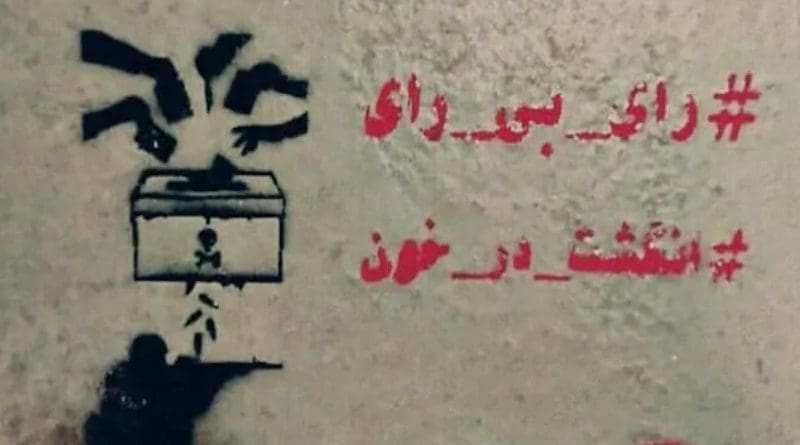Factions Decide Iranian Elections: Will The Iranian People Accept It? – OpEd
By Hamid Enayat
As the Iranian election looms for this year, the question of candidates is coming to the forefront. Since the Guardian Council, made up of 12 members who are directly or indirectly chosen by Khamenei, chooses the candidates, it is assumed that whoever they choose will be loyal to the regime and Khamenei.
However, as the Iranian people continue to speak out against the regime in uprisings, protests, and boycotts, it is clear that the regime is splintering under the pressure. The factions are fighting even more over the presidency, which is a path to wealth within this corrupt system. Khamenei’s hands are still in all areas of the regime, but he has grown increasingly weak and vulnerable. Therefore, he finds himself in the position of directing the Guardian Council to approve candidates that are loyal to him but that represent both factions.
His speeches throughout March indicate that while it might appear to represent both factions, the truth is that Khamenei would like to purge the rival faction, thus protecting his seat of power and at the same time, sending a clear message of strength to the Iranian people. His goal is to squash any further attempts at the uprisings that could spell the end of his government.
Still, to understand how the factions are negatively impacting the future of the regime, it is essential to understand what these two factions represent. The first faction is the Principalists (pro-Khamenei). It is comprised of four political tendencies, including the Unity Council, the Conservative Alliance, the Perseverance Front, and Ahmadinejad’s faction. However, within this faction, these four groups still suffer from deep schisms, especially in light of the uprisings in 2018 and 2019. They are unsure what candidate to put forward that would quiet the Iranian people without sacrificing the regime’s power. The truth is that any candidate they put forward is meant to just appease the people and the international community without instituting any real change.
The second faction is the Reformist faction, known as the followers of the Imam’s line, which references Khomeini. This faction was instrumental in the U.S. embassy occupation, establishing and running the security services of the country, including the prisons. They stoke the internal repression and external terrorism. Despite claiming to be for the Iranian people, this faction seeks to increase its share of the plundering of the Iranian people. The challenge is that the Guardian Council is more likely to disqualify their candidate. Plus, a nationwide election boycott threatens its ability to shift the internal balance of power within the regime.
Both of these factions claim to have the best interests of the Iranian people at heart. The truth is that both factions are focused on increasing their power and giving themselves a slice of the financial corruption, which has nearly annihilated the middle class. These mafia-like factions are competing to plunder the nation’s wealth, leading to internal feuding at the top echelons of power.
The trend of Khamenei’s policy decisions up to this point is to retrench his power base, even in the face of popular discontent and international isolation. Throughout Europe, the Iranian embassies are being seen as a source of terrorism. The regime is not in a position of strength as negotiations begin with the U.S. over the next iteration of the JCPOA (Joint Comprehensive Plan of Action) of 2015.
The regime’s presidency is ineffectual, a figurehead at best, in the face of domestic and foreign policy decisions, which are made by Khamenei. Former President Mohammad Khatami described his role as that of a mere functionary. All the policy set out by the Supreme Leader through his various agencies. However, being president does provide a commanding role in state organizations and agencies sitting a corrupt oligarchy controlling Iran’s wealth.
Any funds made from the oil, gas, and petrochemical industries are not put back into the country’s infrastructure and people, but instead line the pockets of the faction’s leadership. Even the elections, which are meant to give the appearance of the Iranian people approving the president, are simply a cover for Khamenei’s confirmation of the leader of the executive branch. The presidency and the electoral process are strictures forced upon Khomeini’s concept of absolute rule by a theocratic leader by a domestic political pressure of the Iranian people’s century old freedom movement.
Yet, despite this attempt to appear for the Iranian people, the truth is that the Supreme Leader is seen as answering only to God with total power and no accountability. The electoral process under this regime is highly stage managed and controlled to bring results that both factions can accept without violating the absolute authority of the Supreme Leader, which underpins the system. Elections in Iran do not serve the Iranian people and result in a travesty of the electoral process.

